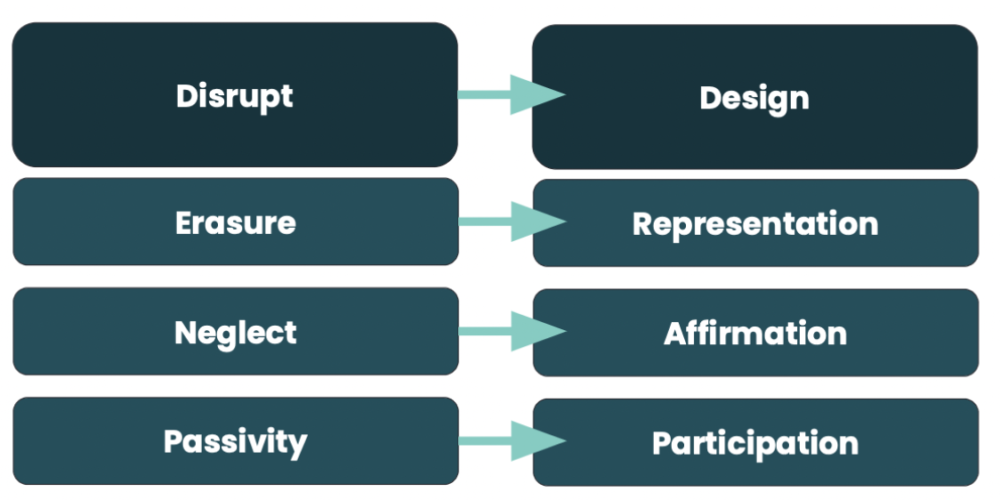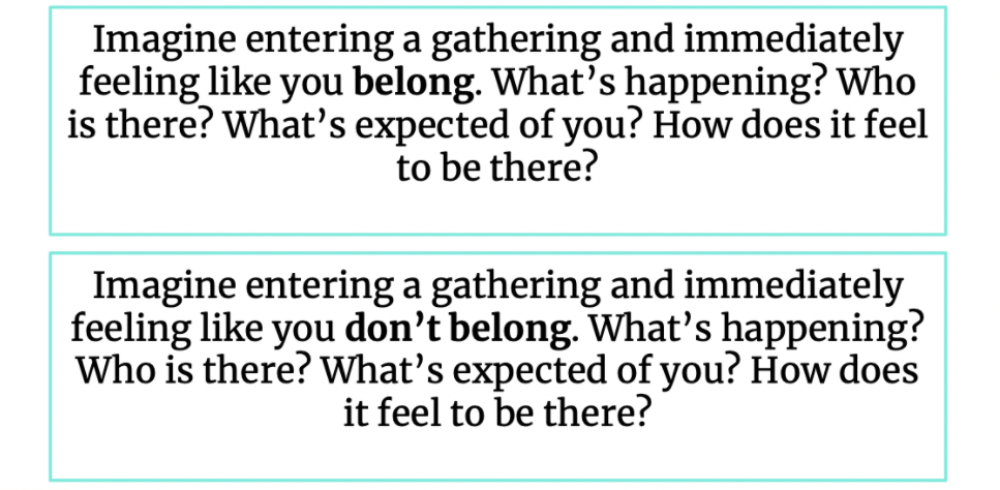Disrupt Neutrality: Three Ways to Begin Designing for Equity
Since early 2020, nearly every educator around the globe has developed an online presence, one that over time has been shifting from crisis response to intentional practice. Designing and utilizing online spaces will continue to be an essential part of our profession going forward.
Yet despite the shared catalyst of Covid-19 forcing much of the transition to online, the ways in which schools and districts have navigated the past year and a half have been varied, in large part due to inequitable circumstances. From access to space, from funding and endowments to the lack thereof, the context that has surrounded our online learning environments has not been equitable. An important point to remember is that it never has been.
These overt and evident inequities have often made the question of designing for equity in our classrooms feel insurmountable and impossible. Inequity is historically embedded, globally and uniquely manifested, and structurally bound. How might individual educators disrupt this in their classrooms, especially when they are online? In February of this year, nearly 1,100 educators from 35 countries participated in GOA’s free one-week educator course Designing for Equity to explore this question. This course builds from the premise set forth here. We must start by disrupting neutrality.
Disrupt neutrality; design for equity.
The premise of disrupting neutrality is simple: one would not need to design for equity if current systems and structures were already designed for all learners to have equal opportunities, experiences, and outcomes. To design for equity relies on a fundamental acknowledgment that “our current systems perpetuate inequity by design” and so it is our responsibility to actively disrupt those systems and redesign them. Disrupting neutrality helps to ensure that we do not reinforce or perpetuate the inequities that are inherent.
1. Start with Self
Each of us is not a neutral entity within our learning environments. As Ijeoma Uluo writes in her book, So You Want to Talk about Race?,“Our school employees are not exempt from the racist influences of our society,” which is to say that we are not exempt from the racist and inequitable influences of our society/ies, many of which have become ingrained in our systems, structures, and policies. So it is vital that the work of disrupting neutrality in order to design for equity begins with self.
Our identities and lived experiences shape our own lenses and perspectives, which, in turn, influence our actions, our behaviors, and our practice. Liza Talusan, Ph.D. says, “Who you are informs what you do, how you act and interact, and how you see the world around you.” Our lenses and perspectives, and subsequently, our lenses’ margins, shape our practice. It is important, then, for us not to perceive our educator practice as one that is neutral, nor to assume that our context is. Instead, beginning with disruption invites us to reflect, to set intention to expand our lenses and our practice, to recognize and “design for our margins” and with purpose for equity.
2. Prepare for Ongoing
Put simply, designing for equity is ongoing work, particularly when beginning with the premise of disrupting neutrality. Because inequities can manifest both as deeply embedded systems and structures as well as subtle or overt actions and behaviors, taking an incidental or checklist approach to our equity work is not sufficient; instead, we must make equity an integral part of what we see and what we do.
One way to do this is through identifying what it is that we are seeking to disrupt and what it is that we are intending to design for. For example, in our Designing for Equity course at GOA, we have identified erasure, neglect, and passivity as three inequities that can exist in learning environments. To design against them and for equity, we want to design for representation, affirmation, and participation. By identifying the larger impact of our neutrality or intent, we can more fully embed this into our lenses, our actions, and our practice.

3. Prioritize Impact
Despite the ongoing nature of this work, designing for equity requires concrete actions - some of which may feel small. Keep in mind, though, that small shifts and small actions can have profound impact, especially when they are taken regularly and often. A helpful place to start can be with an empathy exercise:

Note that feeling a sense of belonging or not is visceral and can be triggered by cues, both subtle and overt. This is also true for our learning environments, communities, and practices. For too long, the data and stories of marginalization, erasure, and neglect have not improved, despite good intentions and hopeful efforts. Thus, we need to actively and consistently disrupt those systems, structures, and practices that have contributed to or perpetuate the impacts of inequity in order to design against them and for the impacts of equity.
Going Forward
We invite you to join us in June for our next offering of Designing for Equity. Through a framework of Disrupt and Design, we seek to disrupt neutrality in our educator practice by working through modules focused on Self, Learning Environment, Content, Assessment, and Grading. Registration is open and free to any and all educators. We look forward to learning from and with you.
